The roar of vintage engines. The gleam of polished chrome. An audience in its Sunday best. The Africa Concours d’Elegance is more than just a classic‑vehicle show — it’s a cultural landmark celebrating Kenya’s automotive heritage, attracting entrants from across the continent and beyond. Since 1971, this event has fused elegance, nostalgia, and spectacle in Nairobi, and in 2025 (the “Bob Dewar Memorial Edition”) it remains a must‑see for petrolheads, families, and history lovers alike.
In this article, you’ll discover the origins, structure, highlights, and significance of the Africa Concours d’Elegance — and why it continues to captivate generations.
A Legacy on Wheels
Origins and Evolution
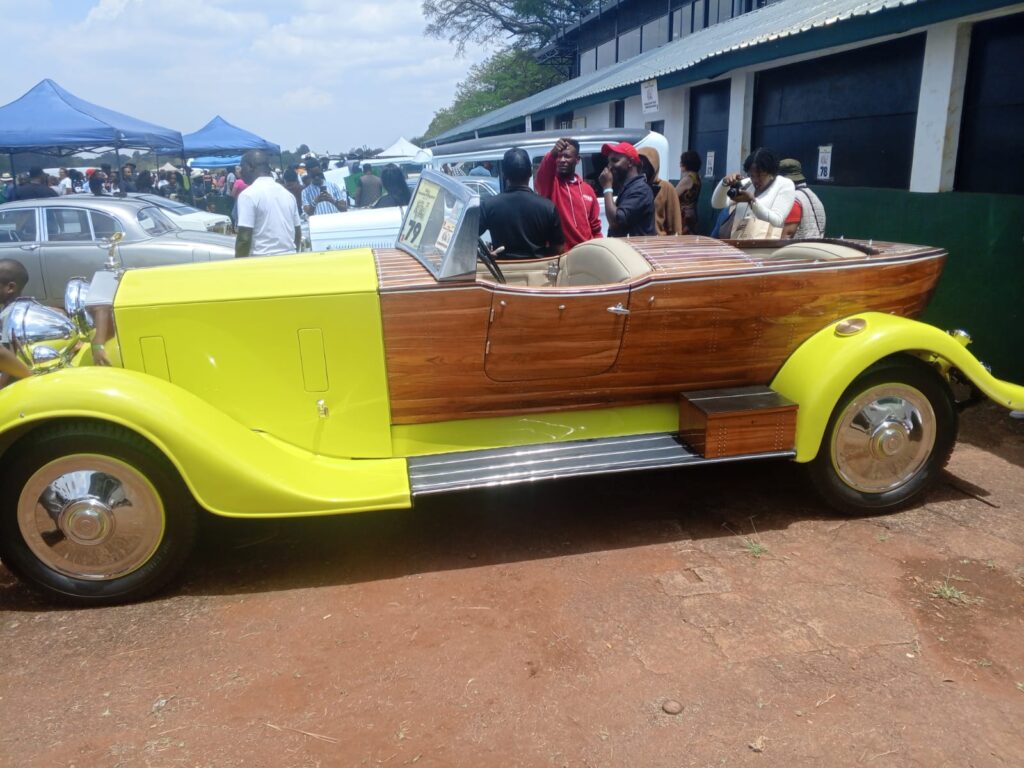
The Africa Concours d’Elegance traces its roots back to 1971, when it was first held in Nairobi, Kenya. Initially a niche gathering of classic car lovers — primarily Alfa Romeo enthusiasts — the event was the brainchild of the Alfa Romeo Owners Club (Kenya). Its original purpose was simple: to bring together vintage vehicle owners for a friendly competition that celebrated well-maintained classics.
What began as a small-scale hobbyist event quickly grew in popularity, drawing interest from collectors across Kenya. The allure of vintage beauty, engineering precision, and social flair transformed the Concours into a high-profile fixture on the Kenyan motorsports calendar.
Despite its strong continuity, the event paused briefly in 2020 and 2021 due to the global COVID‑19 pandemic. Its return in 2022 marked a strong resurgence, with even greater public and international interest.
A significant milestone in the Concours’ history came in 2006, when it received formal recognition from FIM Africa — the continental body governing motorcycle sport. This elevated its status and legitimacy, especially for two-wheeled entrants, opening the event to a broader audience and higher-quality competition.
The Africa Concours d’Elegance is now more than a local event; it is considered a continental classic vehicle showcase, with entrants from South Africa, Uganda, Zimbabwe, the UK, and beyond. Today, it stands as one of East Africa’s premier motoring and heritage spectacles, blending automotive excellence with cultural celebration.
Format, Entries & Judging
The structure of the Africa Concours d’Elegance is meticulously planned to preserve the event’s prestige and manageability. For the 2025 edition, organizers set a strict entry cap: 70 cars and 40 motorcycles. These slots are highly coveted and are filled on a first‑come, first‑served basis — encouraging early application and careful curation.
The judging process is both technical and visually detailed. Vehicles are assessed across several key criteria:
- Condition of bodywork, chassis, engine, and interiors
- Cleanliness, including the tiniest visible components
- Age bonus, which rewards older vehicles for preservation over time
Interestingly, originality is not required. Unlike some global concours events that penalize modifications or restorations that deviate from factory specs, the Africa Concours embraces a more inclusive philosophy. All makes and models are welcome — from American muscle and European luxury to African-restored classics.
This openness has led to a rich variety of winners. Past champions include a 1928 Chevrolet, a 1934 Alvis Firefly, and a 1952 MGTD — rare models restored to pristine condition. The motorcycle classes have seen equally impressive victors, such as Indian Scouts, Moto Guzzis, and vintage British bikes that still roar with purpose decades later.
Each entry reflects months, sometimes years, of restoration work. Judging is not merely about how shiny a car looks — it’s about honoring dedication, mechanical expertise, and the preservation of automotive history. The result is a balanced mix of high-level competition and heartfelt storytelling behind every machine.
2025: Bob Dewar Memorial Edition
Venue and Date
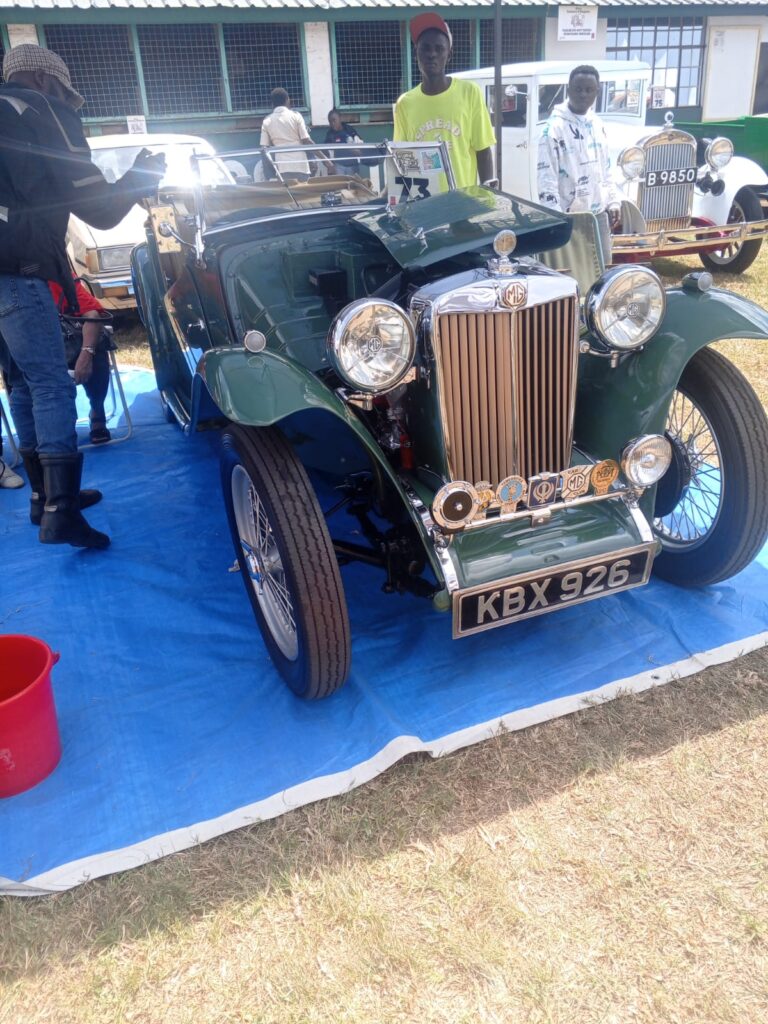
The 2025 Africa Concours d’Elegance took place on Sunday, September 28, at the iconic Ngong Racecourse in Nairobi. This venue, long associated with the event, provides the perfect blend of accessibility, historical relevance, and capacity to host a major outdoor showcase. The sprawling grounds accommodate the exhibition zones, judging lines, vendor stalls, and family-friendly entertainment spaces — all against the scenic backdrop of the Ngong Hills.
This year’s edition was dedicated to the memory of Bob Dewar, a respected figure in Kenya’s motoring journalism and classic car scene. Dewar was known not only for his decades of writing and publishing auto content but also for his unwavering support for the preservation of Kenya’s automotive heritage. Naming the 2025 event in his honor underscored his contribution to the growth and visibility of the Concours over the years.
Participation & Entries
The 2025 Concours attracted a diverse international field of car and motorcycle enthusiasts. Participants came from across Africa — including Uganda, Tanzania, Zimbabwe, and South Africa — as well as from overseas nations such as England.
Among the standout automotive entries:
- A 1937 Austin 7 shipped from England, which drew significant attention due to its pristine restoration and unique British motoring history.
- A 1988 BMW E30 M3, one of the most iconic performance saloons of the late 20th century, entered the competition for the first time, sparking excitement among motorsport fans.
- Several Alfa Romeos, true to the roots of the organizing club, were submitted by both local collectors and international participants.
On the motorcycle side, past winners and vintage stars made strong showings. Most notable was Dominique Antoine’s 1925 Triumph 550SD, a frequent podium finisher and crowd favorite. Other bikes in the field included Moto Guzzis, Hondas, and Harleys from multiple decades — each representing deep mechanical care and restoration artistry.
Highlights & Results
The judging panel evaluated dozens of top-tier vehicles across multiple categories, and the results reflected both restoration quality and presentation finesse.
Winners in 2025 included:
- Overall Car Winner: Sati Gata-Aura’s 1947 MG TC, which impressed judges with its mechanical detail and period-accurate finish. It earned 277 points — the highest score across all vehicle classes.
- First Runner-Up (Cars): James Duder’s 1928 Ford Model A, scoring 272 points.
- Second Runner-Up (Cars): Mike Duder’s 1930 Essex Super Six, with 258 points.
Motorcycle Category:
- Top Motorcycle: Dominique Antoine’s 1925 Triumph 550SD, scored 179 points, maintaining its reputation as a meticulously maintained vintage classic.
- Most Elegant Bike: The award went to Iqbal Omar’s Harley Davidson, a machine noted for its aesthetic presentation and detailed chrome finish.
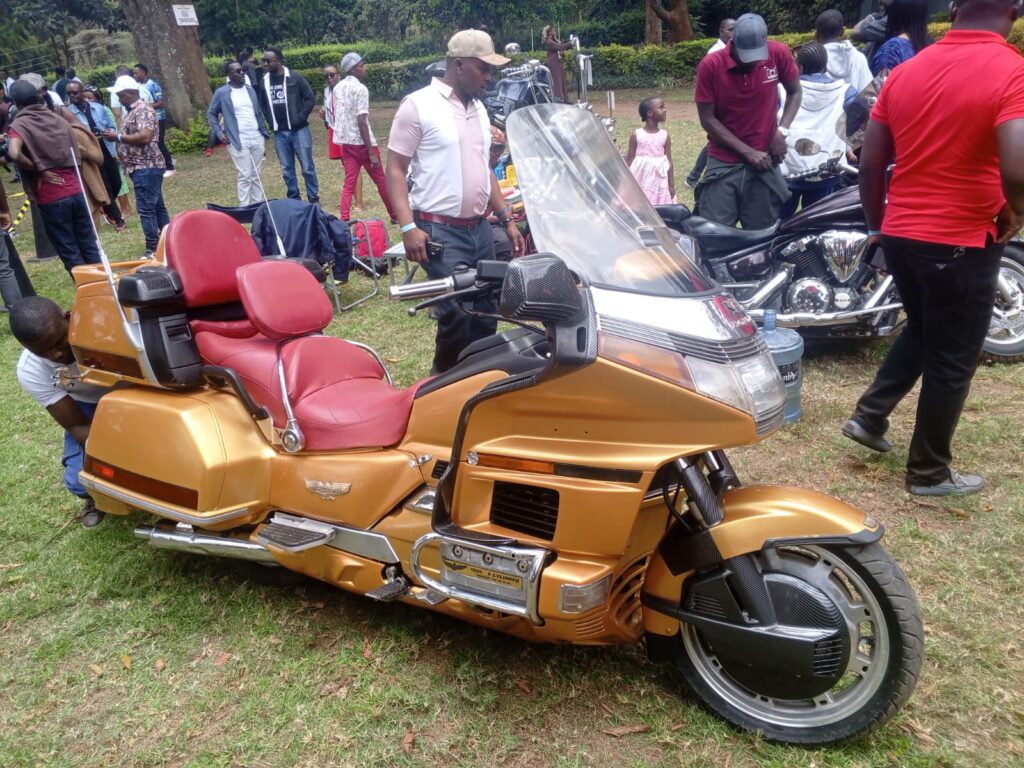
In addition to the main competitions, the event featured several auxiliary attractions:
- A Classic Sale segment, where collectors showcased vintage vehicles (25+ years old) available for purchase — sparking interest among buyers and restoration hobbyists.
- Motor trade stands featuring 28 vendors, offering everything from spare parts and restoration tools to memorabilia and apparel.
- A heritage collection of antique machinery — including farming equipment, tools, and non-motorized vehicles.
- A motor sports arcade that provided hands-on entertainment, simulators, and safe racing activities for young attendees.
The day offered both spectacle and substance — a full calendar of competitions, exhibitions, and community interaction.
Sponsorship & Logistics
Sponsorship and security are crucial to an event of this scale. In 2025, SGA Security Kenya returned as a key partner for the third year running. They contributed an estimated KES 1 million, which supported a robust security framework including:
- Trained guards stationed throughout the venue
- K9 units for perimeter checks
- Vulnerability mapping to identify and mitigate risk areas
Their presence ensured a seamless experience for both participants and spectators, reinforcing the Concours’ reputation as a well-organized, family-friendly event.
Stanbic Bank Kenya continued its long-standing sponsorship, supporting the Concours not only financially but also in its mission to preserve Kenya’s motoring heritage, drive local tourism, and stimulate economic activity through local vendor partnerships and media engagement.
The 2025 edition drew a crowd of over 10,000 attendees, from families and fashion lovers to car enthusiasts and industry professionals. The scale and polish of the event — from infrastructure to security, logistics to programming — reaffirmed the Africa Concours d’Elegance as a continental benchmark in classic car showcases.
The Allure Behind the Engines
Automotive Glamour & Craftsmanship
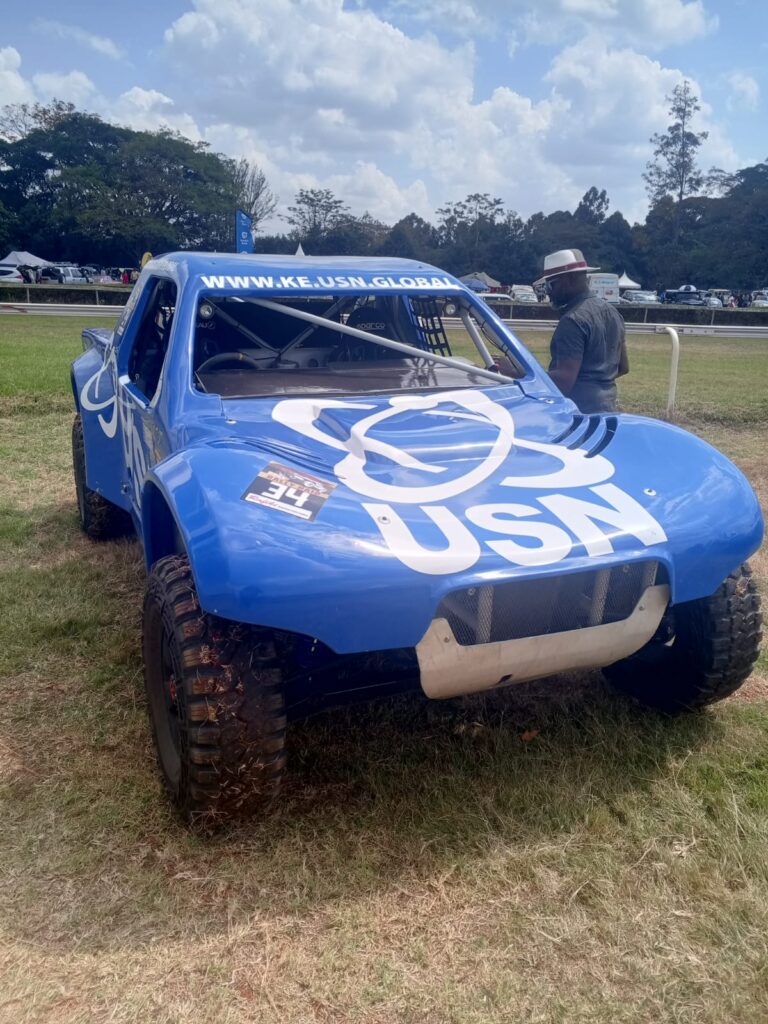
Each entry at the Africa Concours d’Elegance represents years of mechanical dedication. Behind every gleaming body panel is a story of restoration — often involving hard-to-source parts, skilled craftsmanship, and long nights spent in garages and workshops.
The event celebrates the concours aesthetic, where perfection is paramount. Vehicles must appear as close to new as possible — free of rust, blemishes, and wear. Every surface is polished. Every component, from engine bay to undercarriage, must reflect precision.
But beyond engineering, there’s a strong element of visual artistry. Paint schemes are period-accurate. Upholstery choices often match original specs or improve on them with tasteful enhancements. Even tools and documentation displayed beside the vehicle can affect presentation.
For entrants, this is not simply about winning — it’s about pride. Pride in ownership, in history, and in the ability to breathe new life into a machine that might otherwise have faded into obscurity.
Fashion, Social Flair & Spectacle
The Africa Concours d’Elegance is also a style event. Attendees don elegant outfits that reflect the vintage era of the cars. Think linen suits, floral dresses, hats, and shoes polished for the occasion. The fashion complements the vehicles — enhancing the sense that one has stepped into another time.
The venue layout encourages movement and mingling. Guests stroll among the cars, chat with owners, pose for photos, and engage with judges and sponsors. For photographers, it’s a dream environment — a visual blend of heritage, lifestyle, and mechanical beauty.
Children play in designated zones. Couples walk hand in hand between the exhibits. Influencers capture content for their platforms. This cross-section of society — from gearheads to creatives — makes the Concours more than a show. It becomes a cultural gathering with shared appreciation at its core.
Heritage & Education
While the cars and motorcycles draw the spotlight, the event also carries a historical mission. The Heritage Collection showcases not only vintage vehicles but also older machines like typewriters, generators, ploughs, and other equipment that shaped Kenya’s industrial past.
This curated collection serves as an open-air museum. For children and students, it’s a chance to understand how technology evolved. For elders, it evokes memories of a time when cars had character, and tools were built to last.
More importantly, it educates people on the importance of preservation. Mechanical heritage is fragile — it fades unless efforts are made to restore, document, and share it. The Concours plays a vital role in making these stories public.
Workshops, guided tours, and conversations with owners offer young visitors insight into restoration as a hobby — or even a career. The event sows the seeds of future mechanics, collectors, and automotive historians.
Economic and Tourism Impact
The Africa Concours d’Elegance is not only a showcase of elegance — it’s an economic engine.
Media coverage is broad and international. Outlets such as BBC, Reuters, AFP, AP, and SABC have all reported on the event, giving Kenya positive global visibility. This media footprint positions the Concours as a symbol of local capability in hosting premium events.
The Kenya Tourism Board actively supports and promotes the Concours as part of its strategy to boost sports tourism and cultural travel. International entrants, especially from Europe and South Africa, often spend weeks in Kenya — visiting attractions, booking hotels, and engaging in local experiences beyond the event.
Local businesses benefit significantly:
- Spare parts dealers and classic car mechanics see increased demand
- Vendors at the event sell food, drinks, apparel, and memorabilia
- Transporters, caterers, printing companies, and cleaning services are all engaged
The event also strengthens the restoration ecosystem. Owners invest in local talent for bodywork, painting, engine rebuilding, and upholstery. This creates income opportunities and keeps skills circulating in the market.
Moreover, the Concours builds collector communities. Through shared interests, participants often trade vehicles, source rare parts, or mentor younger hobbyists. The long-term result is a growing, self-sustaining classic car culture in Kenya and East Africa.
Behind the Scenes: Organizing the Elegance
Entry Management & Regulation
The Africa Concours d’Elegance is a juried event, meaning not all who apply are guaranteed a spot. Organizers cap participation at 70 cars and 40 motorcycles to preserve the integrity of the show. This ensures judges have adequate time to assess each entry thoroughly while maintaining a high overall standard for presentation.
Applicants are encouraged to register early — as slots fill up fast, sometimes months before the event. The entry process is transparent. Regulations and entry forms are made publicly available on the official Concours Kenya website. These outline acceptable vehicle conditions, judging criteria, age requirements, and event rules.
Importantly, the judging methodology is unique:
- Condition evaluates paintwork, engine presentation, body integrity, interior finish, and more
- Cleanliness inspects the entire vehicle — including undercarriage and engine bay — for meticulous detail
- Age bonus awards points to older vehicles, acknowledging the difficulty of preserving or restoring aging components
Unlike other global concours events, originality is not a scoring category. This opens the door for custom restorations, modern enhancements, and unique personal touches, allowing diverse entries without disqualifying vehicles for non-stock features.
Venue & Layout
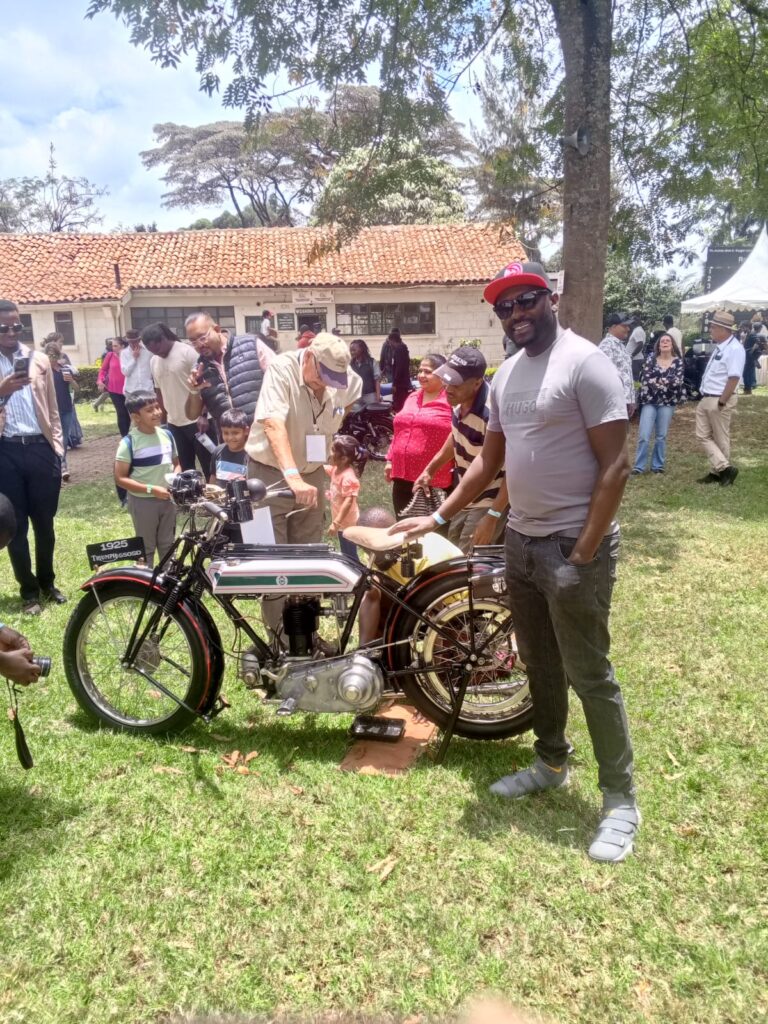
The Ngong Racecourse in Nairobi has become synonymous with the Concours. Its expansive, open-air setting supports a wide range of logistical needs, including large vehicle exhibits, spectator movement, and trade exhibitions.
Organizers plan a detailed venue layout well in advance, including:
- Judging lines for systematic vehicle evaluation
- Paddock zones for parked entries and viewing
- Spectator walkways to ensure free and safe movement
- Vendor and trade stand areas for food, drinks, car parts, and sponsor booths
- Children’s play zones with rides, games, and family-friendly activities
- Designated parking and drop-off points to manage traffic flow and crowd density
Approximately 28 motor trade stands are featured annually. These showcase everything from modern cars, insurance, diagnostics, restoration tools, and merchandise. Sponsors, automotive brands, and accessory sellers use these platforms to reach a targeted audience of enthusiasts and collectors.
Security & Safety
Security is handled with military-level precision. In 2025, SGA Security Kenya was the official partner — their third year in a row supporting the event. Their comprehensive safety plan included:
- Uniformed guards stationed at entrances, judging lines, and VIP zones
- K9 units patrolling the grounds for enhanced threat detection
- Vulnerability mapping, where high-risk zones are pre-identified and monitored throughout the day
In addition, the organizing committee prepares detailed plans for:
- Crowd management to avoid bottlenecks and ensure family safety
- Emergency services, including first aid tents, paramedics on site, and clear evacuation routes
- Vehicle protection, with security checkpoints ensuring that high-value entries remain safe throughout the day
This robust infrastructure supports a seamless, enjoyable, and secure event for over 10,000 attendees annually.
Media & Publicity
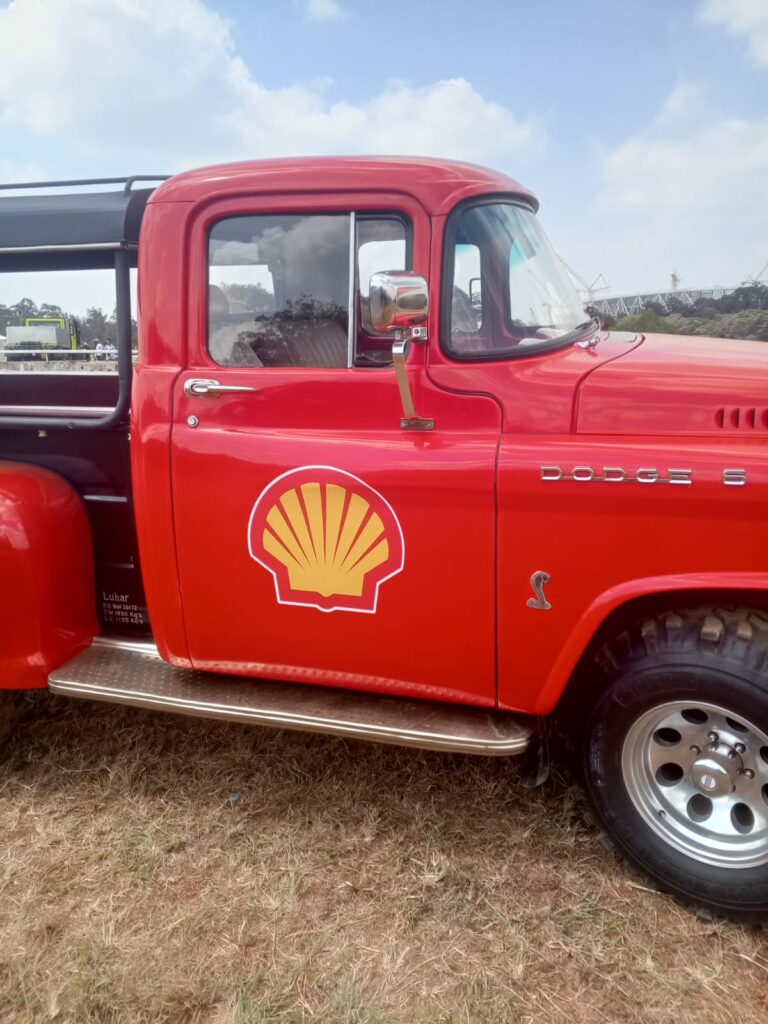
The Africa Concours d’Elegance isn’t just a visual feast on the ground — it’s a major media event. The show attracts regional and international press, often covered by TV, print, radio, and digital platforms.
A half-hour televised program is typically produced and aired on DSTV and other stations, providing extensive post-event coverage. This content highlights the top vehicles, interviews with participants, and audience reactions — helping extend the event’s life beyond a single day.
Social media plays a critical role in modern engagement. The event is promoted across platforms like Instagram, Facebook, and X (formerly Twitter), using behind-the-scenes reels, live streams, and user-generated content to reach younger audiences.
Professional photographers, bloggers, and influencers contribute to a digital footprint that boosts tourism and brand visibility — aligning perfectly with the goals of event sponsors and Kenya’s national tourism efforts.
Tips for Attending & Participating
As a Spectator
- Arrive early: Entry congestion is common, and early arrivals catch rare closing entries or pre-judging lineups.
- Dress smartly: While casual wear is accepted, many dress in elegant or vintage styles to match the event’s tone.
- Carry a camera or smartphone: The cars, bikes, outfits, and scenic setting make for unforgettable photo ops.
- Explore the entire venue: Don’t miss the trade stands, the children’s zone, the Heritage Collection, or the Classic Sale section.
As a Competitor
- Register as early as possible: With limited slots, early submission is key to participation.
- Perfect your vehicle: Attention to cleanliness, detailing, and presentation often makes the difference in judging.
- Prepare for the day: Carry tools, spare parts, towels, and display materials. Some entrants also bring vehicle history boards.
- Network actively: The event is ideal for meeting fellow restorers, learning new techniques, and trading parts or knowledge.
Challenges & Opportunities
Challenges
- Quality control: Ensuring that all entries meet high presentation and safety standards is a persistent challenge.
- Logistical complexity: Managing vehicle movements, crowd flow, and concurrent activities in one venue requires precise planning.
- Funding and sponsorship: As costs rise, maintaining financial support from corporate partners becomes more competitive.
- Balancing tradition and innovation: The event must evolve without losing its identity — especially in how restoration methods and judging criteria are handled.
Opportunities
- Pan-African expansion: There is potential to involve more participants from new African regions and expand the network continentally.
- Tourism packaging: The event can be included in travel itineraries by tour operators, offering cultural travelers a unique stop.
- Youth engagement: Partnering with technical colleges and vocational schools to promote careers in restoration, detailing, or automotive design.
- Corporate brand exposure: Luxury and lifestyle brands increasingly seek authentic platforms like the Concours for experiential marketing and customer engagement.
Final Word
The Africa Concours d’Elegance is more than a car show; it’s a yearly celebration of elegance, engineering, and legacy. It bridges the past and present — giving life to vintage machines, honoring the craftsmen who restore them, and inspiring enthusiasts across generations. In its 53rd iteration, the Bob Dewar Memorial Edition upheld this tradition with flair, drawing global attention and reminding us that in Kenya, as in the world over, the passion for heritage and horsepower endures.
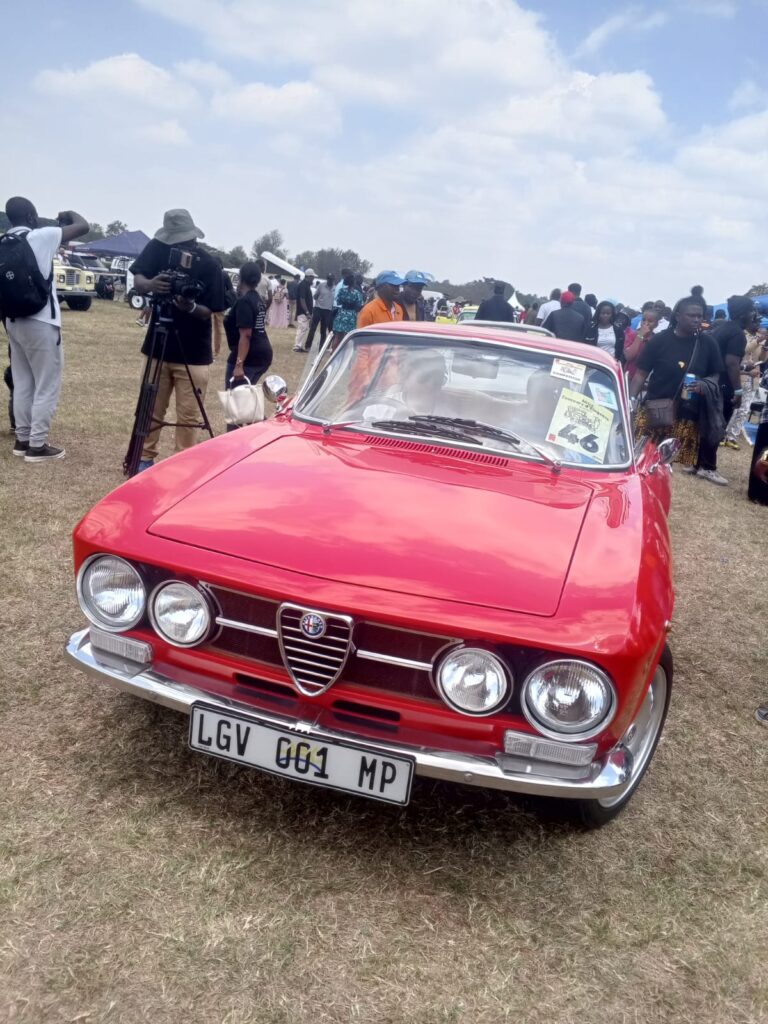
Whether you’re a seasoned collector, a curious spectator, or someone looking to explore Kenya’s cultural events, the Africa Concours d’Elegance offers a timeless spectacle worth witnessing.
Frequently Asked Questions
1. What is the Africa Concours d’Elegance?
It is an annual classic car and motorcycle show held in Nairobi, Kenya. The event judges vehicles based on condition, cleanliness, and age — not originality — and showcases entries from across Africa and overseas.
2. When and where does the event take place?
It typically happens in late September at the Ngong Racecourse in Nairobi. The 2025 edition took place on September 28.
3. Who can enter the competition?
Anyone with a well-restored classic car or motorcycle. Entries are limited (70 cars and 40 bikes) and accepted on a first-come, first-served basis.
4. What are the judging criteria?
Vehicles are judged on condition, cleanliness, and bonus points for age. Originality is not a requirement.
5. Can I attend as a spectator?
Yes. The event is open to the public with ticket purchase. It includes exhibitions, trade stands, entertainment, and food courts.
6. Is there a dress code?
There is no official dress code, but most attendees dress elegantly. Fashion is part of the experience.
7. How do I register my vehicle for the event?
You can download entry forms from the official website: www.concourskenya.com
8. What types of vehicles are allowed?
All makes and models are welcome, including vintage, classic, and rare modern restorations that meet age or condition standards.
9. Who organizes the event?
The event is organized by the Alfa Romeo Owners Club Kenya and is recognized by the Kenya Motorsports Federation and FIM Africa.
10. Why is it called the “Bob Dewar Memorial Edition” in 2025?
It honors Bob Dewar, a key figure in Kenyan motorsport and a longtime supporter of the Concours. His legacy in the motoring world is remembered through this edition.


